A New Study Has Revealed That Compounds Present In The Martian Soil Can Wipe Out Whole Bacterial Cultures

A new study has revealed that compounds present in the Martian soil can wipe out whole bacterial cultures within minutes.
Researchers have had their suspicions over whether microorganisms can actually survive on the surface of the Red Planet, and now lab tests are spelling doom for any potential little green bacteria. And yeah, growing potatoes on Mars might be more difficult than we thought.
The problem here lies with perchlorates - chlorine-containing chemical compounds that we first detected on Mars back in 2008. These salty compounds are also what makes water on the Martian surface stay liquid, essentially turning it into brine.
Perchlorates are considered toxic for people, but they don’t necessarily pose a problem for microbes. And because they keep surface water liquid, on Mars the presence of these compounds could even be beneficial for life - or so we thought.
Researchers from the University of Edinburgh have now confirmed that when you pair the compounds with intense ultraviolet (UV) light exposure, things become grim for any life forms.
Continue Reading.
More Posts from Redplanet44 and Others
Imagine the lightsabers from this
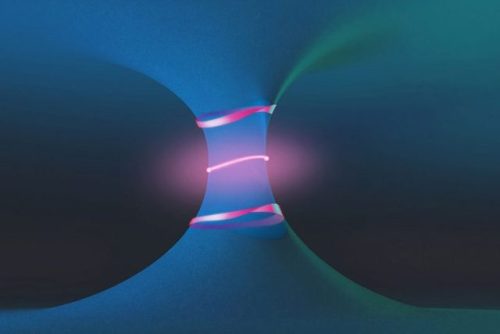
Scientists Observe New Exotic Phenomena in Photonic Crystals
Topological effects, such as those found in crystals whose surfaces conduct electricity while their bulk does not, have been an exciting topic of physics research in recent years and were the subject of the 2016 Nobel Prize in physics. Now, a team of researchers at MIT and elsewhere has found novel topological phenomena in a different class of systems — open systems, where energy or material can enter or be emitted, as opposed to closed systems with no such exchange with the outside.
This could open up some new realms of basic physics research, the team says, and might ultimately lead to new kinds of lasers and other technologies.
The results are being reported this week in the journal Science, in a paper by recent MIT graduate Hengyun “Harry” Zhou, MIT visiting scholar Chao Peng (a professor at Peking University), MIT graduate student Yoseob Yoon, recent MIT graduates Bo Zhen and Chia Wei Hsu, MIT Professor Marin Soljačić, the Francis Wright Davis Professor of Physics John Joannopoulos, the Haslam and Dewey Professor of Chemistry Keith Nelson, and the Lawrence C. and Sarah W. Biedenharn Career Development Assistant Professor Liang Fu.
Read more.
ISS Expedition 54 crew land safely in Kazakhstan
Houston TX (SPX) Feb 28, 2018 Three members of the Expedition 54 crew aboard the International Space Station (ISS), including NASA astronauts Mark Vande Hei and Joe Acaba, returned to Earth on Tuesday after months of performing research and spacewalks in low-Earth orbit. Vande Hei, Acaba and cosmonaut Alexander Misurkin of the Russian space agency Roscosmos landed at 9:31 p.m. EST (8:31 a.m. Feb. 28 in Kazakhstan) sout Full article
Disabled? Most abled person!
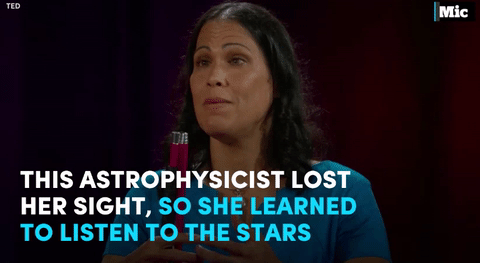


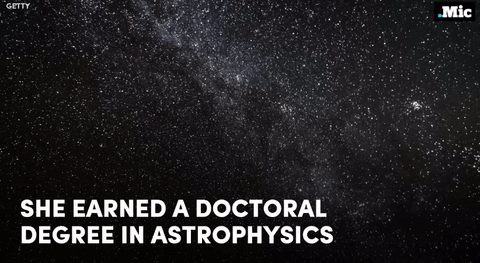
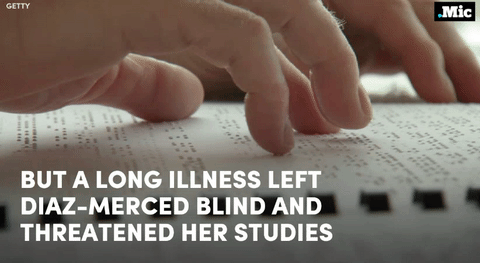

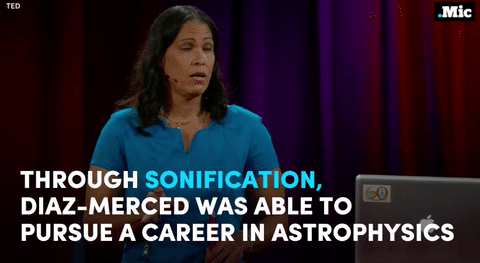




follow @the-future-now
Types as Ya Boy Bill Nye quotes
ESFJ:

ESFP:

ESTJ:

ESTP:

ENFJ:

ENFP:

ENTJ:

ENTP:

ISFJ:

ISFP:

ISTJ:

ISTP:

INFJ:

INFP:

INTJ:

INTP:

Heavy metal is in our blood!
Anytime you don’t feel powerful, remember this:

Supergiant stars are beasts! Their life is a fight between gravity pushing in and heat pushing out. They fuse heavier and heavier elements in their core until they get to iron. They can’t fuse any more. Iron absorbs more energy than it returns, so gravity takes over. The star’s core collapses and the star dies in an explosive supernova that outshines its entire galaxy.

The heat of a supernova fuses new elements during the explosion, which are then spread out into space via the nebula remnant. Nebulae are the birthplaces of new stars and solar systems.

The iron in your blood came from one of the most powerful explosions in the universe.

You have something in your blood that can kill stars and build solar systems.
So the other night during D&D, I had the sudden thoughts that:
1) Binary files are 1s and 0s
2) Knitting has knit stitches and purl stitches
You could represent binary data in knitting, as a pattern of knits and purls…
You can knit Doom.
However, after crunching some more numbers:
The compressed Doom installer binary is 2.93 MB. Assuming you are using sock weight yarn, with 7 stitches per inch, results in knitted doom being…
3322 square feet
Factoring it out…302 people, each knitting a relatively reasonable 11 square feet, could knit Doom.
"Who is afraid of Super Woolf?"
Should make a Webbinar about it
Webb 101: 10 Facts about the James Webb Space Telescope
Did you know…?

1. Our upcoming James Webb Space Telescope will act like a powerful time machine – because it will capture light that’s been traveling across space for as long as 13.5 billion years, when the first stars and galaxies were formed out of the darkness of the early universe.

2. Webb will be able to see infrared light. This is light that is just outside the visible spectrum, and just outside of what we can see with our human eyes.

3. Webb’s unprecedented sensitivity to infrared light will help astronomers to compare the faintest, earliest galaxies to today’s grand spirals and ellipticals, helping us to understand how galaxies assemble over billions of years.

Hubble’s infrared look at the Horsehead Nebula. Credit: NASA/ESA/Hubble Heritage Team
4. Webb will be able to see right through and into massive clouds of dust that are opaque to visible-light observatories like the Hubble Space Telescope. Inside those clouds are where stars and planetary systems are born.

5. In addition to seeing things inside our own solar system, Webb will tell us more about the atmospheres of planets orbiting other stars, and perhaps even find the building blocks of life elsewhere in the universe.

Credit: Northrop Grumman
6. Webb will orbit the Sun a million miles away from Earth, at the place called the second Lagrange point. (L2 is four times further away than the moon!)

7. To preserve Webb’s heat sensitive vision, it has a ‘sunshield’ that’s the size of a tennis court; it gives the telescope the equivalent of SPF protection of 1 million! The sunshield also reduces the temperature between the hot and cold side of the spacecraft by almost 600 degrees Fahrenheit.

8. Webb’s 18-segment primary mirror is over 6 times bigger in area than Hubble’s and will be ~100x more powerful. (How big is it? 6.5 meters in diameter.)

9. Webb’s 18 primary mirror segments can each be individually adjusted to work as one massive mirror. They’re covered with a golf ball’s worth of gold, which optimizes them for reflecting infrared light (the coating is so thin that a human hair is 1,000 times thicker!).

10. Webb is so sensitive, it could detect the heat signature of a bumblebee at the distance of the moon, and can see details the size of a US penny at the distance of about 40 km.

BONUS! Over 1,200 scientists, engineers and technicians from 14 countries (and more than 27 U.S. states) have taken part in designing and building Webb. The entire project is a joint mission between NASA and the European and Canadian Space Agencies. The telescope part of the observatory was assembled in the world’s largest cleanroom at our Goddard Space Flight Center in Maryland.
Webb is currently being tested at our Johnson Space Flight Center in Houston, TX.

Afterwards, the telescope will travel to Northrop Grumman to be mated with the spacecraft and undergo final testing. Once complete, Webb will be packed up and be transported via boat to its launch site in French Guiana, where a European Space Agency Ariane 5 rocket will take it into space.

Learn more about the James Webb Space Telescope HERE, or follow the mission on Facebook, Twitter and Instagram.
Make sure to follow us on Tumblr for your regular dose of space: http://nasa.tumblr.com.
) ... i mean ;)

Hmm
-
 cavernario-galindo liked this · 5 years ago
cavernario-galindo liked this · 5 years ago -
 replicant1955 liked this · 6 years ago
replicant1955 liked this · 6 years ago -
 gucci-depressione liked this · 6 years ago
gucci-depressione liked this · 6 years ago -
 indicativeof-sideways-escalation reblogged this · 6 years ago
indicativeof-sideways-escalation reblogged this · 6 years ago -
 megxolotl liked this · 6 years ago
megxolotl liked this · 6 years ago -
 wiwoadji reblogged this · 6 years ago
wiwoadji reblogged this · 6 years ago -
 wiwoadji liked this · 6 years ago
wiwoadji liked this · 6 years ago -
 duksisdarker reblogged this · 6 years ago
duksisdarker reblogged this · 6 years ago -
 duksisdarker liked this · 6 years ago
duksisdarker liked this · 6 years ago -
 they-see-me-rolling-dice liked this · 6 years ago
they-see-me-rolling-dice liked this · 6 years ago -
 testicularcontretemps liked this · 6 years ago
testicularcontretemps liked this · 6 years ago -
 thebiggestbugking liked this · 6 years ago
thebiggestbugking liked this · 6 years ago -
 a-golden-bear liked this · 6 years ago
a-golden-bear liked this · 6 years ago -
 sirikenobilegends liked this · 6 years ago
sirikenobilegends liked this · 6 years ago -
 prettyflyforabi liked this · 6 years ago
prettyflyforabi liked this · 6 years ago -
 dezaurydoz reblogged this · 7 years ago
dezaurydoz reblogged this · 7 years ago -
 charr reblogged this · 7 years ago
charr reblogged this · 7 years ago -
 boxheadpaint liked this · 7 years ago
boxheadpaint liked this · 7 years ago -
 starsnuffer reblogged this · 7 years ago
starsnuffer reblogged this · 7 years ago -
 notfarfromthepedantry reblogged this · 7 years ago
notfarfromthepedantry reblogged this · 7 years ago -
 sodaisgayplastic liked this · 7 years ago
sodaisgayplastic liked this · 7 years ago -
 shinier-happier-people reblogged this · 7 years ago
shinier-happier-people reblogged this · 7 years ago -
 shinier-happier-people liked this · 7 years ago
shinier-happier-people liked this · 7 years ago -
 caramel-bites reblogged this · 7 years ago
caramel-bites reblogged this · 7 years ago -
 dogsofthewasteland reblogged this · 7 years ago
dogsofthewasteland reblogged this · 7 years ago -
 palaeopathological reblogged this · 7 years ago
palaeopathological reblogged this · 7 years ago -
 thingsilikekinda reblogged this · 7 years ago
thingsilikekinda reblogged this · 7 years ago -
 sickandtwisteddoc liked this · 7 years ago
sickandtwisteddoc liked this · 7 years ago -
 sickandtwisteddoc reblogged this · 7 years ago
sickandtwisteddoc reblogged this · 7 years ago -
 drawnia97 liked this · 7 years ago
drawnia97 liked this · 7 years ago -
 drawnia97 reblogged this · 7 years ago
drawnia97 reblogged this · 7 years ago -
 sealinne liked this · 7 years ago
sealinne liked this · 7 years ago -
 comtedemoney liked this · 7 years ago
comtedemoney liked this · 7 years ago -
 guardianw liked this · 7 years ago
guardianw liked this · 7 years ago -
 areweperfectlywhelmedyet liked this · 7 years ago
areweperfectlywhelmedyet liked this · 7 years ago -
 possiblythreefourthspeahen reblogged this · 7 years ago
possiblythreefourthspeahen reblogged this · 7 years ago -
 zurlatelg-blog liked this · 7 years ago
zurlatelg-blog liked this · 7 years ago -
 techbeauty reblogged this · 7 years ago
techbeauty reblogged this · 7 years ago -
 isellina liked this · 7 years ago
isellina liked this · 7 years ago -
 raymond27 liked this · 7 years ago
raymond27 liked this · 7 years ago -
 kilometers92 reblogged this · 7 years ago
kilometers92 reblogged this · 7 years ago -
 fern-three reblogged this · 7 years ago
fern-three reblogged this · 7 years ago -
 fern-three liked this · 7 years ago
fern-three liked this · 7 years ago -
 largebluepanda reblogged this · 7 years ago
largebluepanda reblogged this · 7 years ago